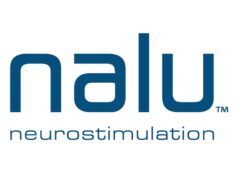A retrospective database review of 12,297 spinal cord stimulator (SCS) patients outlines key findings concerning the indications, incidence of minor and major complications, and rate of subsequent spinal surgery following SCS placement for degenerative spine disease. The study, published in Neuromodulation, found that the most common indication for SCS implantation was post-laminectomy syndrome.
Lawal Labaran from the Department of Orthopaedic Surgery, University of Virginia (Charlottesville, USA) and colleagues write that common postoperative complications included wound infection and removal of SCS electrodes at one year postoperatively. They also concluded: “About 17% of patients had an emergency department visit for spine-related symptoms within one year of device implantation and 15.5% underwent subsequent spine decompression and/or fusion within three years after primary SCS placement.”

According to the authors, studies have shown SCS to be more effective in the treatment of chronic pain in spine patients compared to conservative medical management and reoperation. Despite this, Labaran et al express uncertainty about the long-term efficacy of SCS implants and their necessity in degenerative spine disease treatment, as they add: “The current literature lacks a long-term outlook on the complications, indications, and insight on the proportion of patients who undergo a subsequent spine surgery as a measure of the long-term efficacy of SCS.”
Thus, the study investigators set out to retrospectively examine these factors through a commercially available database: the PearlDiver Patient Records Database. The authors extracted information from all Medicare patients who underwent a primary SCS implantation through a laminectomy between 2005 and 2014, with each patient studied within 90 days, one year, two years, and three years postoperatively. Using ICD-9 (International Classification of Disease, Ninth Revision) codes, Labaran et al excluded patients with a history of spine infection, trauma, and primary malignancy.
A total of 12,297 SCS patients were included. Through an analysis of patient demographics, a higher incidence of SCS implantation in patients less than 65 years old (43.4%) was found, with the lowest incidence seen to occur in patients greater than 85 years (2.4%). All patients had a mean Charlson Comorbidities Index (CCI) of 4.63±2.34, while 60.6% of the patient cohort were female.
Although the most common indication for open SCS placement was post-laminectomy syndrome (25.2%), chronic pain syndrome followed closely behind (20.2%), while other indications include lumbago or backache (14%) and thoracic or lumbosacral neuritis or radiculitis (9.1%). In terms of SCS complications, the authors reported a 4.2% and 17.2% incidence of postoperative emergency department visits at 90 days and one-year, retrospectively. Moreover, the incidence of SCS removal or reimplantation was 0.3% and 3.4% at 90 days and one-year. According to Labaran, further notable complications included surgical site infection, haematoma, seroma and intraspinal abscess.
Lastly, the review indicated that within 90 days of SCS, 0.9% (110 out of 12,297), of patients had a subsequent spinal surgery, with the rate increasing to 7.1%, 11.7% and 15.5% at one, two, and three years, respectively.
The authors put forward that this “nationally representative large Medicare population” adds to the growing body of literature on SCS implantation. They write: “Given that SCS is not as widely performed as decompression/fusion, this information will be useful for preoperative planning and patient education, while contemplating revision spine surgery versus SCS, especially for physicians who have adopted or plan to adopt this technique for failed spine surgery.”
Nonetheless, Labaran and colleagues point to certain caveats in their review. As the results are limited to open SCS placement with laminectomy, the findings cannot be extended to percutaneous implantation. Additionally, the authors allude to the possibility of inaccuracies due to nonuniform coding practices, including instances of miscoding and noncoding of diagnoses, given that such errors have been identified previously in national databases.
Despite these limitations, the study investigators maintain that this retrospective review is “one of the largest studies investigating the indications and complications of SCS implantation”, with its primary advantage being the large sample size and ability to track healthcare use following surgery.









